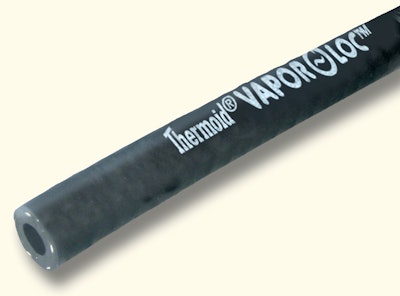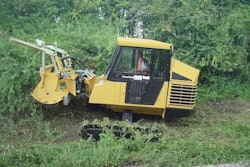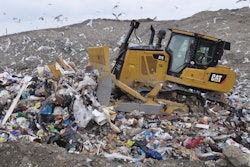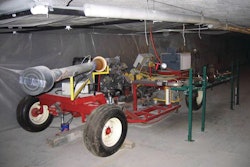
For the past several years, impending low-evaporative emissions regulations from California Air Resources Board (CARB) and the Environmental Protection Agency (EPA) have driven changes to fuel system components in small gasoline engines.
By 2012 (rules for marine applications go into effect next year), spark-ignition non-road engines below 25 hp must be designed to prevent fuel permeation. When fully implemented, EPA expects the new standards will reduce evaporative emissions by 45%. The EPA standards apply to fuel lines, tanks, couplings and fittings, and fuel caps that are fueled with a volatile liquid fuel (such as gasoline, diesel is not included), and to the equipment in which these engines are installed:
To meet increased demand, Walbro Engine Management is expanding its multilayer fuel tank production and support capabilities to meet the rapidly increasing demand for low evaporative emission fuel tanks in the lawn and garden, recreation and marine markets.
“As tighter evaporative emission regulations are being implemented and enforced, our multilayer fuel tank technology provides customers with a durable long range solution that ensures compliance to the end of a product’s life cycle, with a variety of different fuels,” says Tony Martin, president a chief executive officer, Walbro Engine Management, Tucson, AZ.
Walbro has announced the addition of two new multilayer blow molding machines; one for installation in North America at the end of 2010, and the other for in Thailand in mid-2011.
These additions complement the existing capacity and technical resources established by Walbro over the past five years in Cass City, MI.
“Our expanded manufacturing capacity and footprint, coupled with additional technical support personnel,” says Martin, “will help ensure that our fuel tank business is well-positioned to bring the latest technical solutions to our global small engine customer base.”
Walbro offers its multilayer tanks in capacities to 12 gal., and can provide complete low evaporative systems.
Fuel lines
To meet the regulations on the fuel line side, HBD/Thermoid, Inc., Bellefontaine, OH, recently introduced its new fuel line hose products featuring its Vapor-Loc barrier system, an exclusive fuel vapor barrier technology. It has received full approval for general use from CARB.
HBD/Thermoid’s new SAE J30R7 type and SAE J30R9 Vapor-Loc fuel line hoses are designed to carry fuel in trucks, motorcycles, lawn and garden equipment, gasoline powered generators and any other gasoline or bio-fuel-powered engine.
Developed by HBD/Thermoid engineers, the Vapor-Loc system is a multi-layered barrier that traps and prevents hydrocarbon fuel vapors. It also reduces fuel odors and improves the hose’s service life. The barrier system also increases the hose’s ability to resist caustic effects of bio-fuels and ethanol.
“Some of the common solutions for meeting low evaporation requirements are the use of materials that have low permeation properties in the manufacturing of components that make up fuel delivery systems,” says Tim Lippenga, product manager of Petroleum/Industrial Hoses for HBD/Thermoid, Inc. “Hoses, seals and gaskets historically have been weak links for fuel to permeate through. By utilizing reformulated rubber compounds, these components have shown great improvement and allow the fuel delivery systems to meet these requirements.”
Vapor-Loc SAE J30R7 type and SAE J30R9 hose products are available in a variety of I.D. sizes to fit most applications and can be purchased in bulk and/or cut lengths.

















